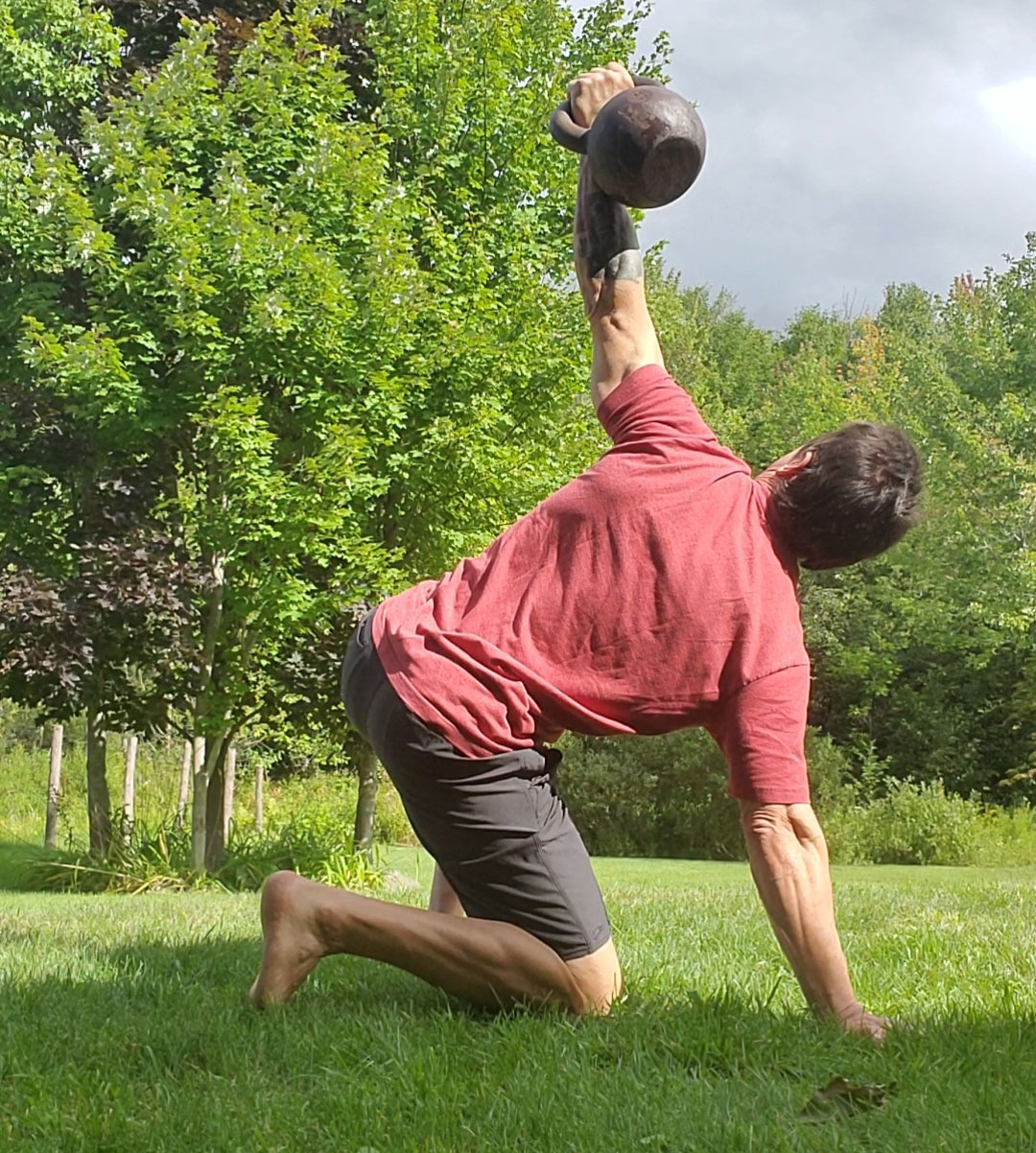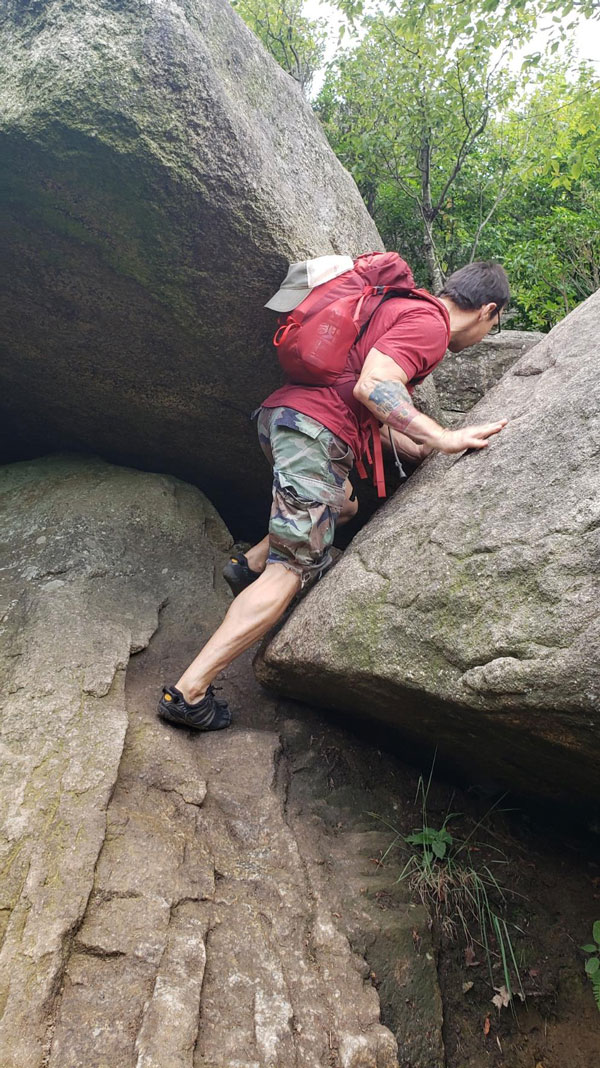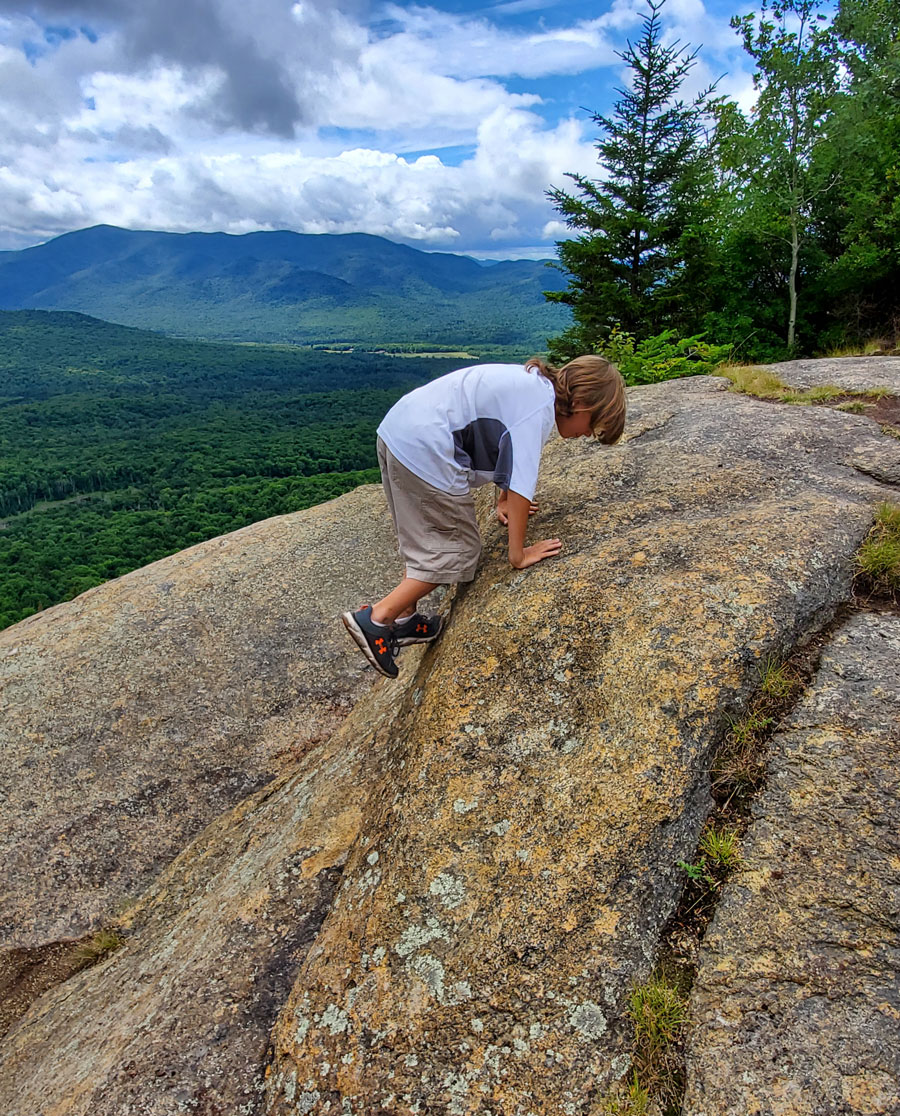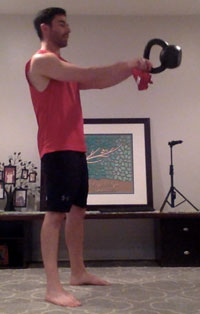
In 2005, I was deployed to Afghanistan as an Infantryman in the Hindu Kush mountains and found some odd shaped weights stamped with “DragonDoor.com”. I did a search and found the book, The Russian Kettlebell Challenge. After reading the advertisement for the program and how it would build strength and endurance for soldiers and fighters I was sold.
After following the manual and video religiously, I was done with the “globo gym” and long runs, as my abilities surpassed my peers’ on the mountainous patrols. I practiced kettlebells and select calisthenics for years and was always more than capable to meet the challenges of rucking and jiu-jitsu. In 2017 I retired and now spend the majority of my free time in the mountains hiking and snowshoeing.
The RKC Plank:
The plank strengthens the body so it can remain upright while hiking under load. Maintaining a strong posture with a pack allows you to enjoy the views—instead of falling into a “pack mule” mode, where your head drops, and you plod along with one foot in front of the other. An upright posture also allows you to keep your lungs open and your focus on footing and route selection.

The Kettlebell Swing:
The Hardstyle kettlebell swing builds lungs, legs, and back strength as well as a strong core—all which are especially important for hiking. Contrary to popular belief, hiking requires more hamstring than quadricep involvement. Having attended courses which focused on performing a lot of air squats while wearing body armor, many of my classmates were still not prepared for the challenges of the mountains in our training. Fortunately, I had also added a liberal dose of swings in my off time. I practiced Bud Jeffries’ protocol outlined in I Will Be Iron and thrived on the trail while others collapsed in exhaustion.
Like the RKC plank, the kettlebell swing—particularly the one-armed swing (OAS)—builds the strength to keep the torso upright while walking with a heavy pack. The OAS also builds the strength to maintain stability as your weight continuously shifts back and forth from foot to foot. The momentary lock out at the top of the swing is also extremely important. It’s training for the “lock step” hikers use when going uphill that allows the bones to support the load for a brief rest, extending a hiker’s endurance. When training for hiking, consider swinging an RKC Snatch Test sized kettlebell for your weight class for many reps with good form. I was training with several hundred swings! Try to reach your rep goal without setting the kettlebell down.
The Goblet Squat:
 When we step up vertically while hiking, the quadriceps enter the scene. The quads act as shock absorbers, aid in speed control, and injury-proof your knees during all aspects of hiking, but especially when descending a mountain. The quadriceps are also prime movers for hopping around difficult terrain and help maintain stability when doing so. Practicing goblet squats is also similar to standing up with a heavy pack. Squats benefit hikers, but in a different way than most believe.
When we step up vertically while hiking, the quadriceps enter the scene. The quads act as shock absorbers, aid in speed control, and injury-proof your knees during all aspects of hiking, but especially when descending a mountain. The quadriceps are also prime movers for hopping around difficult terrain and help maintain stability when doing so. Practicing goblet squats is also similar to standing up with a heavy pack. Squats benefit hikers, but in a different way than most believe.

The Get-Up:
The get-up mechanics are useful for hikers who are trying to rise from the ground with their pack on. When under a heavy pack like the military uses (60 – 100+ pounds), the ability to stand up smoothly prevents you from flailing like a beetle! By pressing and externally rotating the free arm downward and getting your leg underneath you, you allow yourself to rise evenly and under control. The get-up also increases strength and mobility of the spine and hips allowing you to step up, twist over, and move around obstacles.
The Hardstyle Push-up:
Triceps strength plays a role in scrambling uphill and lowering yourself down from a platform—instead of just dropping down and risking a lower body injury. Practicing Hardstyle push-ups also build the strength you will need to push up and over an obstacle.
The RKC Kettlebell Row:
Strong lats and rear delts assist in maintaining a good posture while wearing a pack. Rows build the strength required to climb up a sharp incline, or to pull a rope, tree, rock etc. The row also teaches you how to brace and pull to assist a fellow hiker up and over difficult obstacles like ledges.
While the exercises taught at the HKC (and through the online HardstyleFit program) may not cover every aspect of hiking, they are a solid foundation for you to start thriving in the mountains.
***
Shawn Burnah, RKC. Contact him through his Dragon Door Instructor page: Shawn Burnah, and Follow him on Instagram @shawn.burnah

